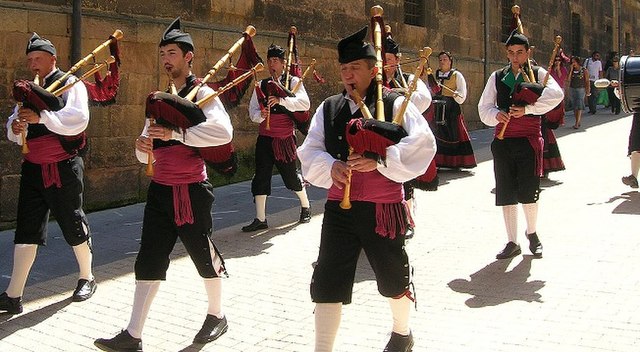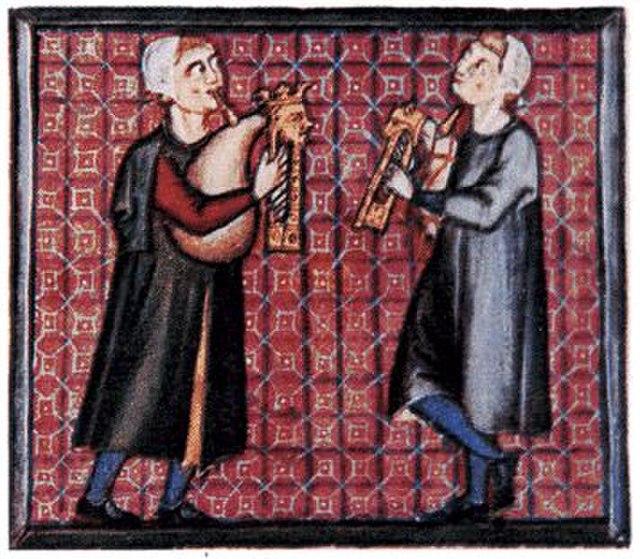The Northumbrian smallpipes are bellows-blown bagpipes from Northeastern England, where they have been an important factor in the local musical culture for more than 250 years. The family of the Duke of Northumberland have had an official piper for over 250 years. The Northumbrian Pipers' Society was founded in 1928, to encourage the playing of the instrument and its music; Although there were so few players at times during the last century that some feared the tradition would die out, there are many players and makers of the instrument nowadays, and the Society has played a large role in this revival. In more recent times the Mayor of Gateshead and the Lord Mayor of Newcastle have both established a tradition of appointing official Northumbrian pipers.

These Northumbrian smallpipes were made by John Dunn, and belonged to Robert Bewick. They have an inscription on the dronestock ferrule stating their provenance. It is likely that this simple chanter is not the original, which was probably keyed.
Billy Pigg
Peacock's keyed chanter
A 7-keyed chanter by Robert Reid. This is a composite image showing all sides of a classic seven-keyed chanter made by Robert Reid, probably about 1820.
Bagpipes are a woodwind instrument using enclosed reeds fed from a constant reservoir of air in the form of a bag. The Great Highland bagpipes are well known, but people have played bagpipes for centuries throughout large parts of Europe, Northern Africa, Western Asia, around the Persian Gulf and northern parts of South Asia.
Bagpipers from Asturias
A detail from the Cantigas de Santa Maria showing bagpipes with one chanter and a parallel drone (Spain, 13th century).
A detail from a painting by Hieronymus Bosch showing two bagpipers (15th century).
A Great Highland bagpipe practice chanter








